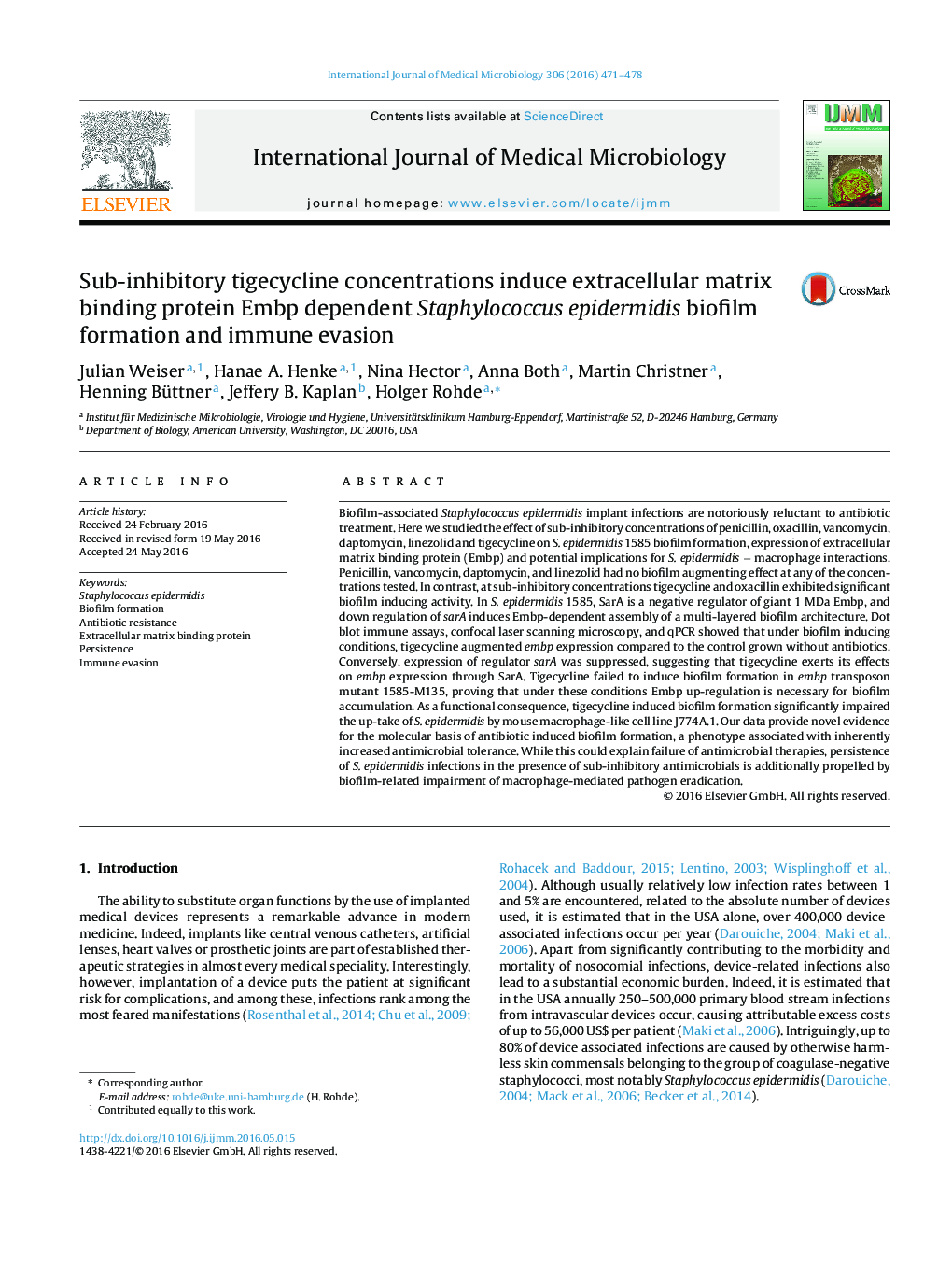| کد مقاله | کد نشریه | سال انتشار | مقاله انگلیسی | نسخه تمام متن |
|---|---|---|---|---|
| 5517780 | 1543678 | 2016 | 8 صفحه PDF | دانلود رایگان |

Biofilm-associated Staphylococcus epidermidis implant infections are notoriously reluctant to antibiotic treatment. Here we studied the effect of sub-inhibitory concentrations of penicillin, oxacillin, vancomycin, daptomycin, linezolid and tigecycline on S. epidermidis 1585 biofilm formation, expression of extracellular matrix binding protein (Embp) and potential implications for S. epidermidis â macrophage interactions. Penicillin, vancomycin, daptomycin, and linezolid had no biofilm augmenting effect at any of the concentrations tested. In contrast, at sub-inhibitory concentrations tigecycline and oxacillin exhibited significant biofilm inducing activity. In S. epidermidis 1585, SarA is a negative regulator of giant 1 MDa Embp, and down regulation of sarA induces Embp-dependent assembly of a multi-layered biofilm architecture. Dot blot immune assays, confocal laser scanning microscopy, and qPCR showed that under biofilm inducing conditions, tigecycline augmented embp expression compared to the control grown without antibiotics. Conversely, expression of regulator sarA was suppressed, suggesting that tigecycline exerts its effects on embp expression through SarA. Tigecycline failed to induce biofilm formation in embp transposon mutant 1585-M135, proving that under these conditions Embp up-regulation is necessary for biofilm accumulation. As a functional consequence, tigecycline induced biofilm formation significantly impaired the up-take of S. epidermidis by mouse macrophage-like cell line J774A.1. Our data provide novel evidence for the molecular basis of antibiotic induced biofilm formation, a phenotype associated with inherently increased antimicrobial tolerance. While this could explain failure of antimicrobial therapies, persistence of S. epidermidis infections in the presence of sub-inhibitory antimicrobials is additionally propelled by biofilm-related impairment of macrophage-mediated pathogen eradication.
Journal: International Journal of Medical Microbiology - Volume 306, Issue 6, September 2016, Pages 471-478